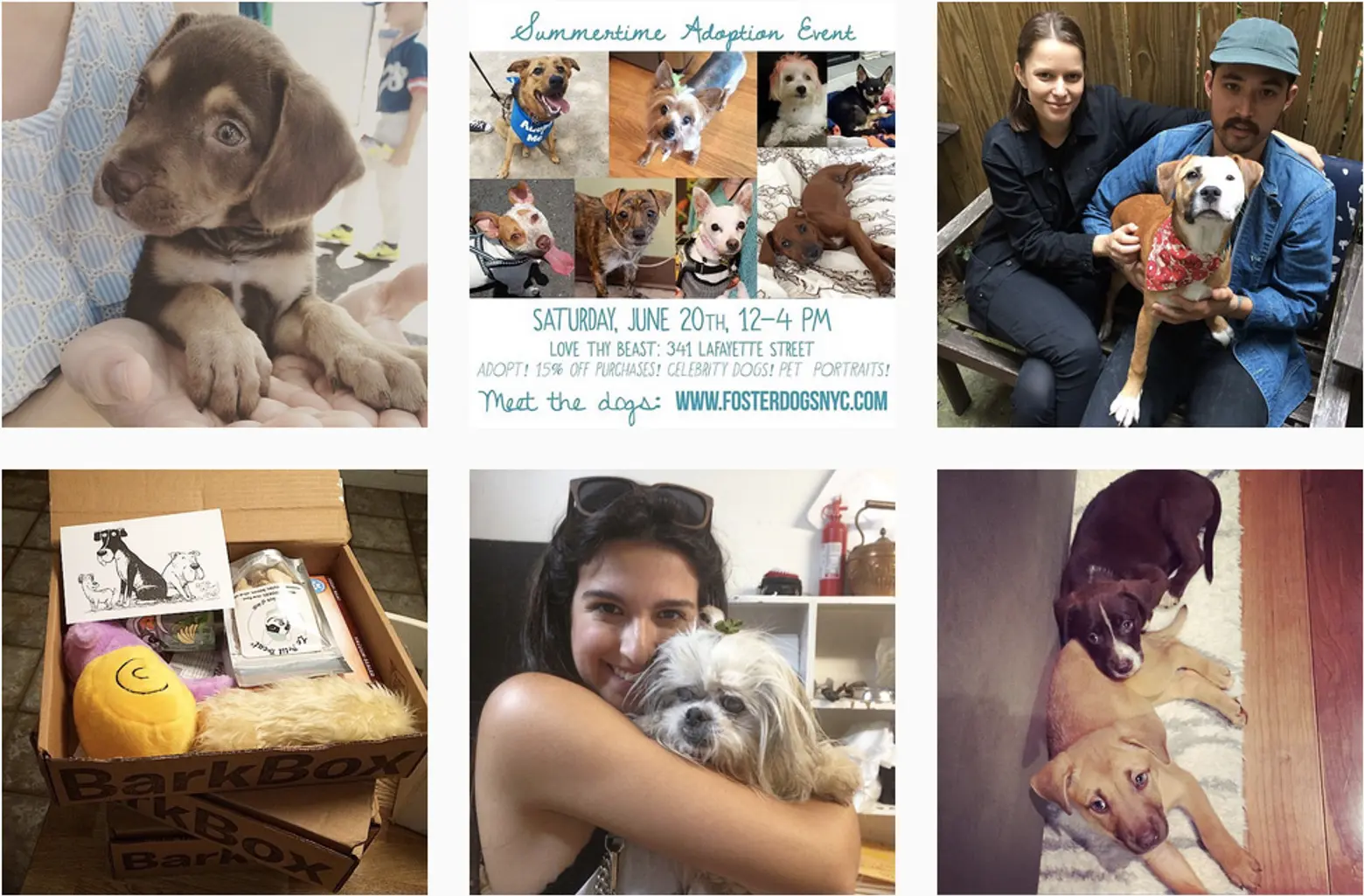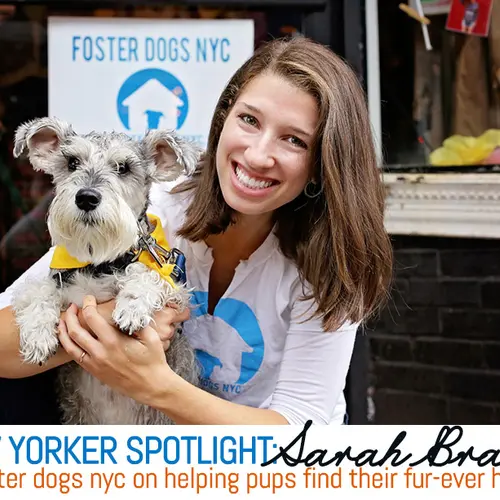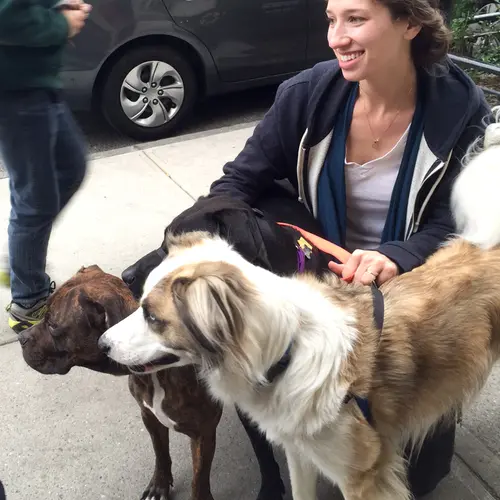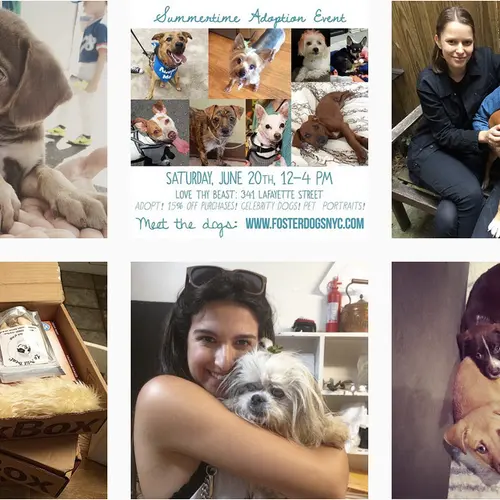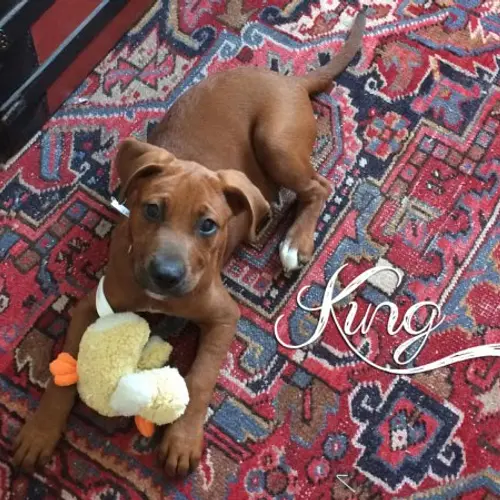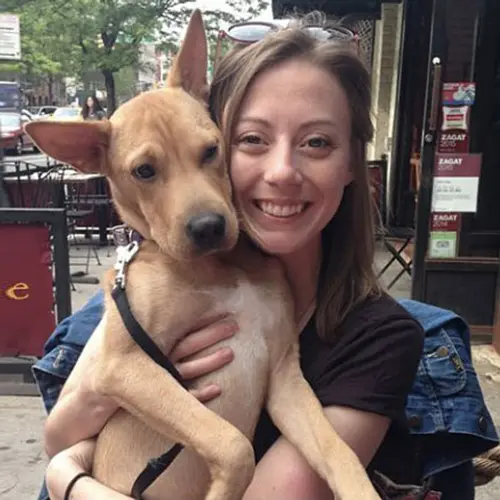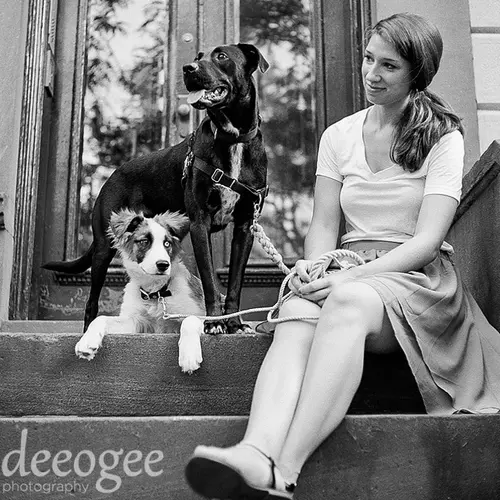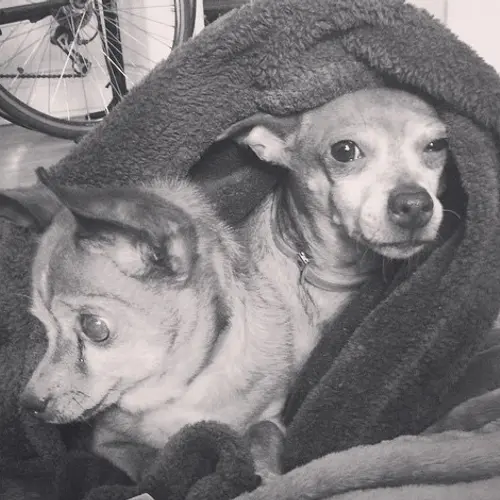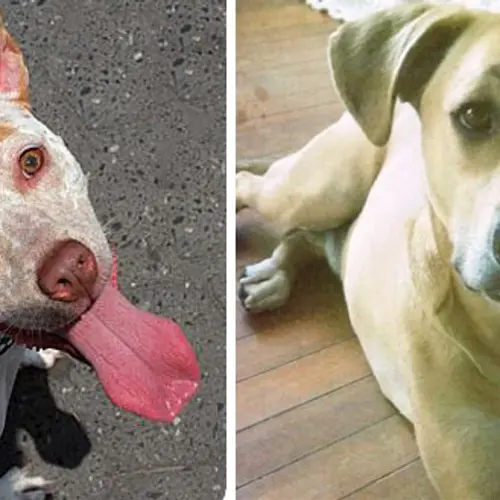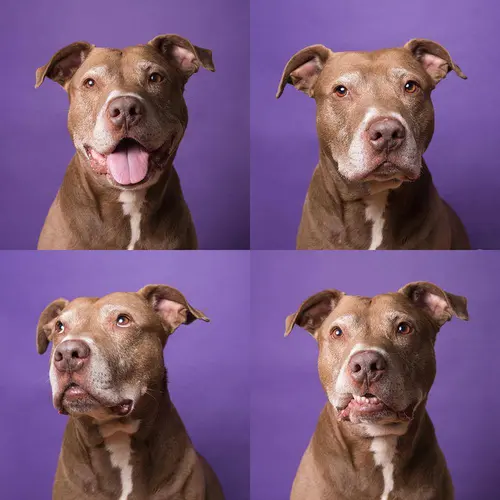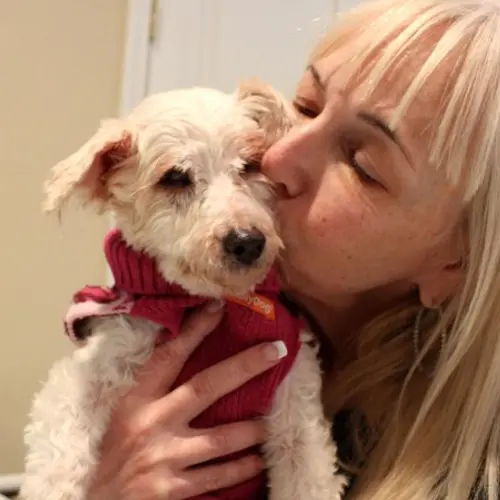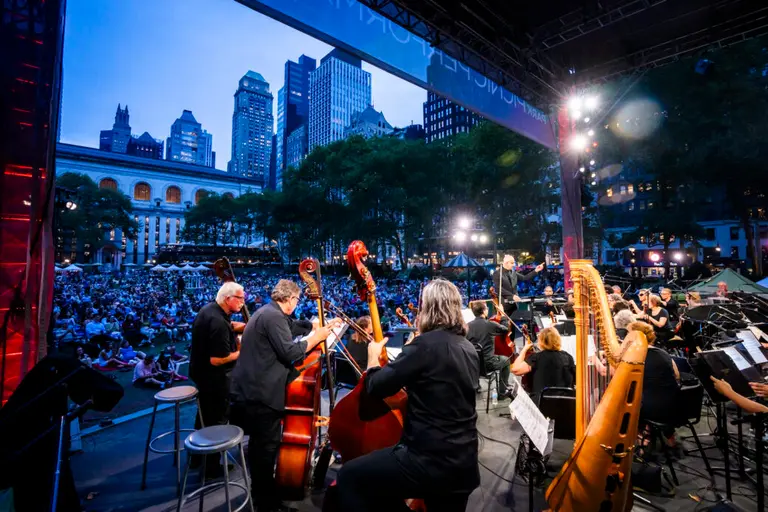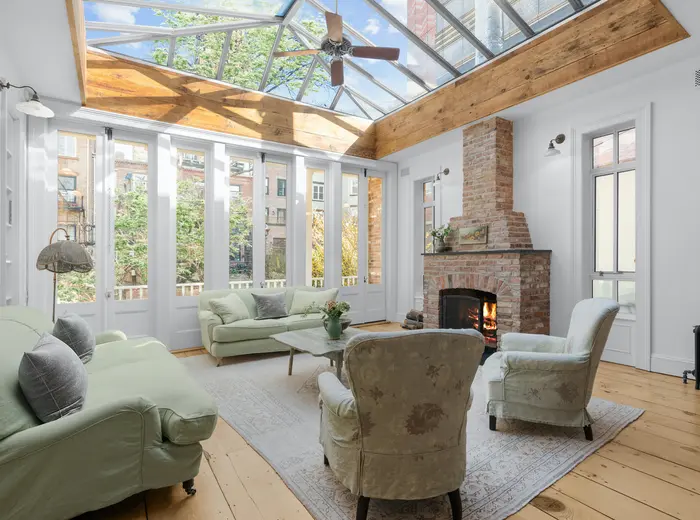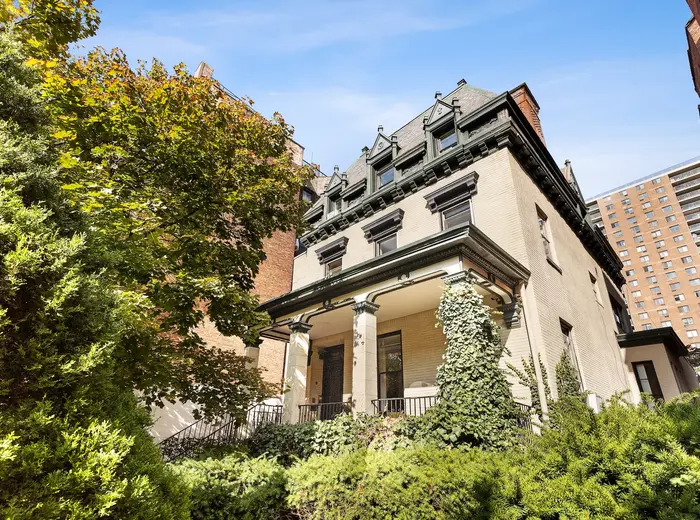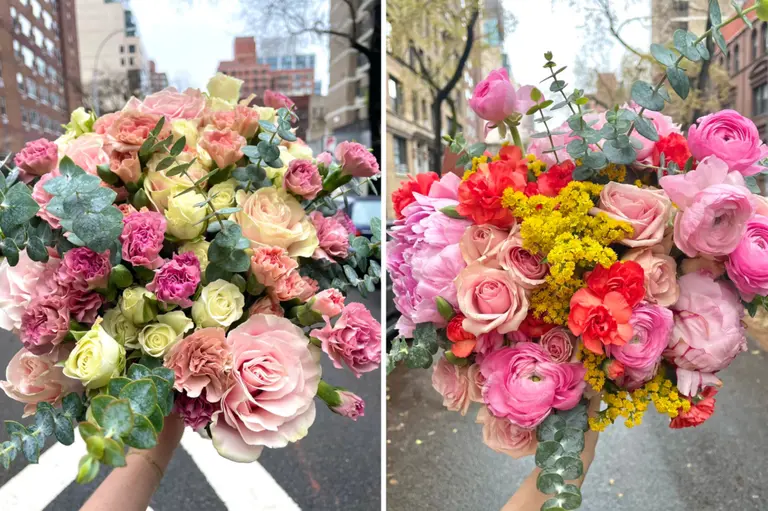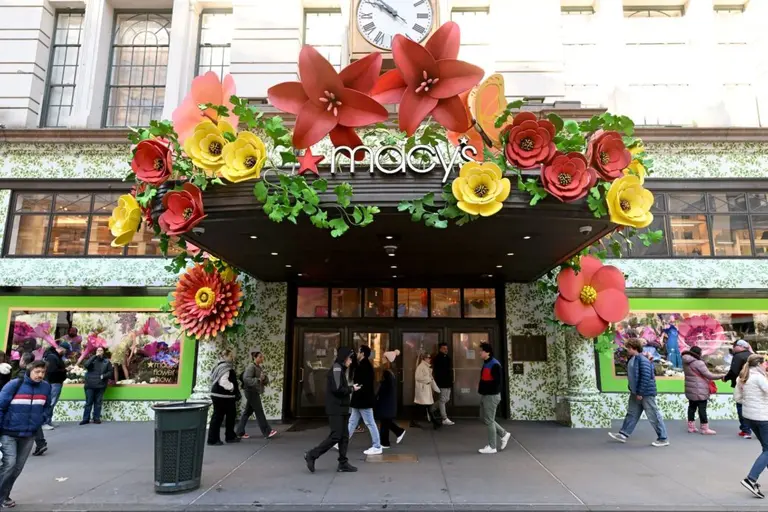New Yorker Spotlight: Sarah Brasky of Foster Dogs NYC on Helping Pups Find Fur-Ever Homes
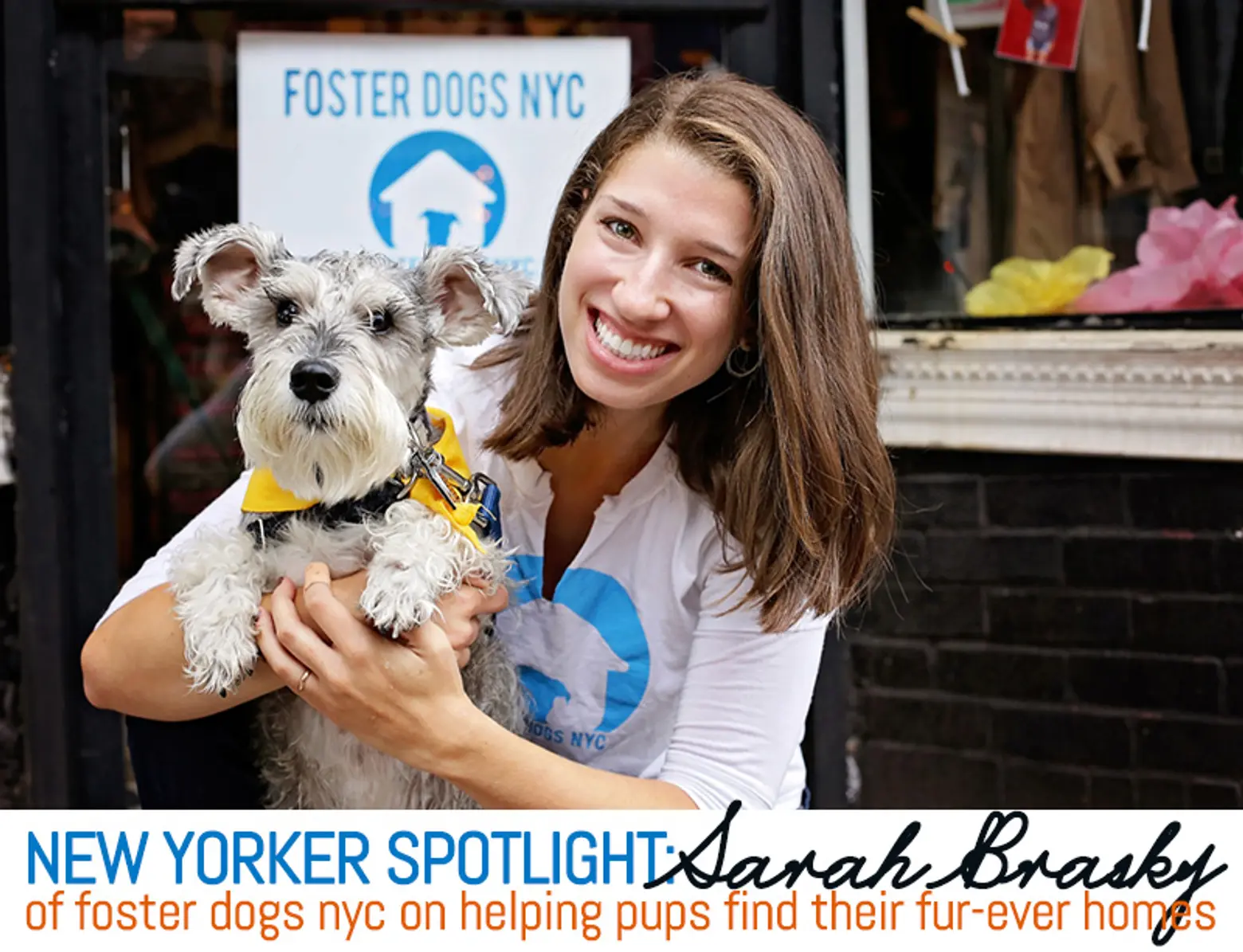
There are people who are born dog lovers and then those who become them. Sarah Brasky was definitely born a dog lover.
From an early age, Sarah was passionate about man’s best friend; she was drawn to dogs, had tons of dog stuffed animals, and began volunteering at a local animal shelter when she was old enough. As an adult, Sarah has transformed this deep love into a means to make a difference when she founded the nonprofit Foster Dogs NYC in 2009. Foster Dogs NYC is devoted to supporting and working with rescue groups and organizations looking to place dogs in fosters homes. For many dogs, this home is the first step on the road to finding a forever home. Individuals who foster dogs are able to help them become the dog he or she was always destined to be through their love and support. Foster caretakers give these dogs a tremendous gift, one that is rewarded with lots of love and licks.
We recently spoke with Sarah to learn more about the incredible work her organization does, to discuss why fostering is so important, and why it is so rewarding to both human and dog.
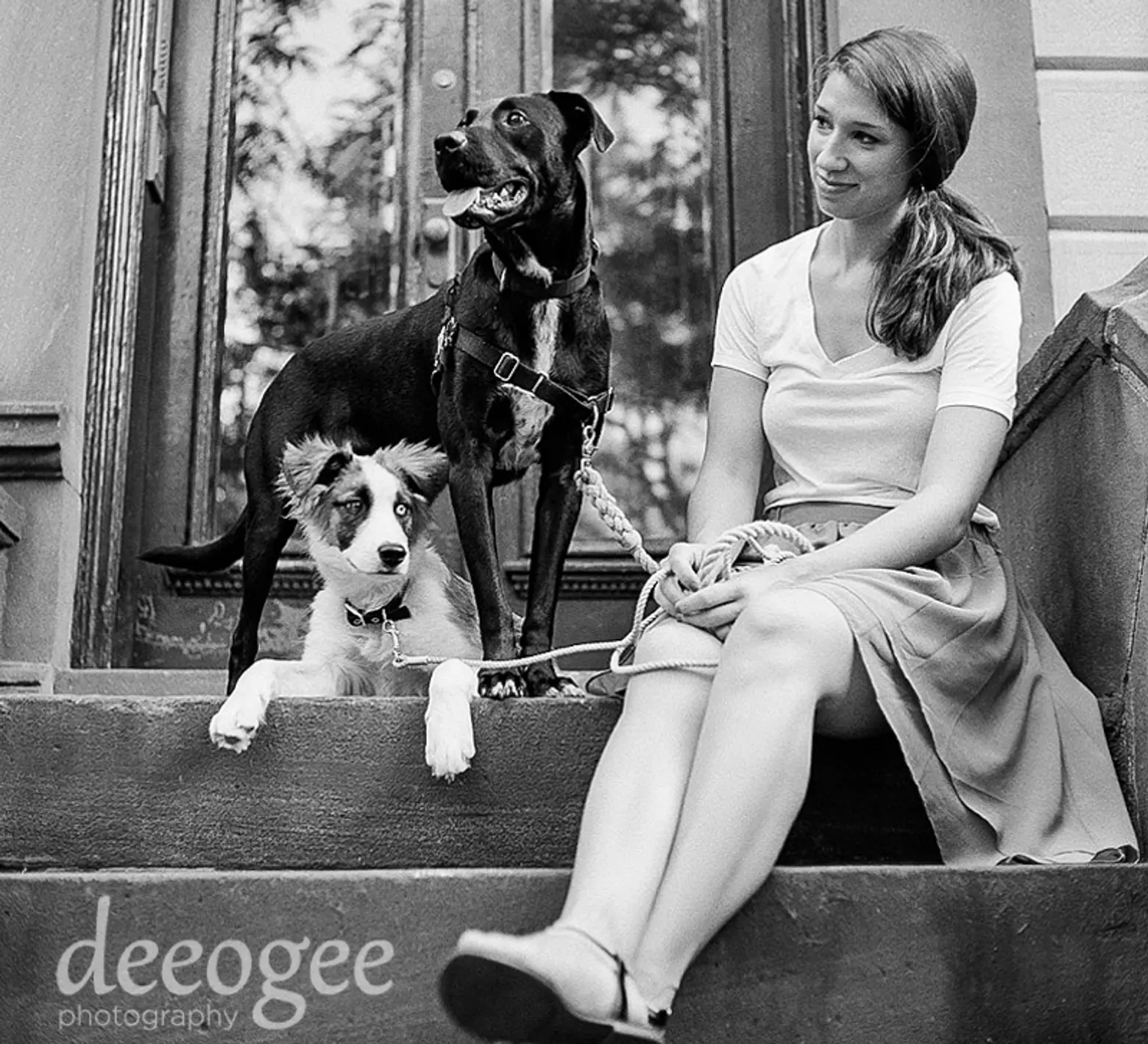 Sarah with her two adopted pooches, Ozzy and Shaggy
Sarah with her two adopted pooches, Ozzy and Shaggy
How early did you realize you loved dogs?
Sarah: I’ve definitely been a dog person as long as I can remember. My parents told me stories from when we lived in Maryland, and the only way they could get me hiking was if we followed a dog up the trail. And that’s probably still the case. Even though I wasn’t able to have my own dog when I was little, I still had dog toys and stuffed animals. Once I was old enough, I volunteered at my local animal shelter and helped out with whatever I could as an 11-year-old.
What inspired you to start Foster Dogs NYC?
Sarah: When I was in college, I felt a disappointment in my lack of ability to have a dog. I felt a hole because I couldn’t bring my dog to college with me. It wasn’t fair to him. Just even volunteering at animal shelters was hard with the area I went to school, which was in a rural area—I didn’t have a car at the time. Once I graduated from college and was living on my own and working in Manhattan, I found myself browsing through adoption websites like it was air. I thought there must me a more productive thing to do with my time instead of just looking at pictures of dogs.
I looked into opportunities not quite knowing what fostering was, I could imagine, but I didn’t know that was quite an option until I did research. I found that there was a foster program with the Manhattan ACC shelter, and once I learned more about it I was excited to share it with other people. And it wasn’t enough to share, I really needed a resource for people who wanted to foster and those who were currently fostering and needed to get the word out about their dogs. I discovered after fostering a dog from the shelter, I couldn’t post the dog onto PetFinder.com without a rescue group. In order to use the site, you have to be a registered animal rescue organization. I had to ask a favor and I was thinking there must be a better way to do this. I put together this go-to website all about fostering in the New York City area and beyond.
Why is fostering dogs so important?
Sarah: A lot of people don’t see the big picture. There are lots of benefits. I like to remind people this a great way to get out, get some more exercise and have a constant companion when you’re home alone. This is a nice way to have somebody there excited to greet you. Another human aspect of it is you don’t have to make a long term commitment. If you are not ready to adopt, fostering a dog is a great way to fulfill that desire without making a 10 – 20 year commitment, both time-wise and financially.
For the dog’s benefits, it’s huge. Let’s say maybe a dog is in a shelter and has mange or giardia or some illness or broken bone, these are things that would be difficult for a new adopter unless they have experience. When a dog goes to a foster home, they can improve physically; growing their hair back, healing from an injury, eating a proper diet. Emotional growth is huge. Potty training can be really tough for a dog that is living in a cage, and socialization is something that can be challenging for a dog at a shelter. You can’t expect shelter staff to run socialization programs when they are trying to make sure the dogs are getting their basic needs. When a dog is in a foster home, the caretakers can help teach them regular bathroom habits, how to share their toys either with humans or other animals if that’s possible, how to basically live as a pet.
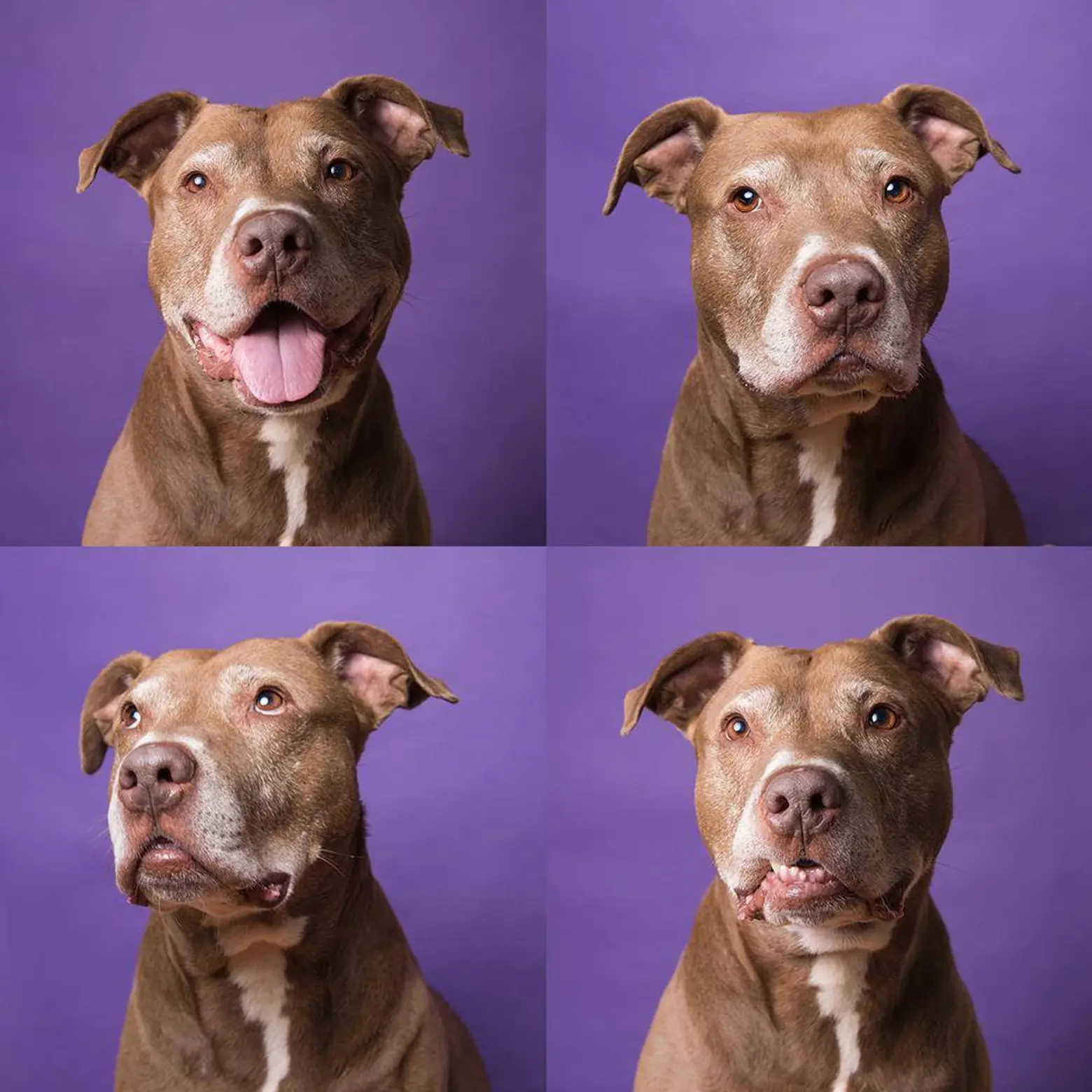 Joey, a snuggly pittie mix up for adoption. Image by Sophie Gamand
Joey, a snuggly pittie mix up for adoption. Image by Sophie Gamand
For someone who has never fostered, can you share what the experience is like from both the human and dog perspective?
Sarah: For someone who has never had a foster dog, it can sound intimidating. The best way to learn about caring for a pet is to do a bit of research and talk to people who’ve had a dog before, but also to just go into this experience with a gung-ho attitude. There will be frustration, shoes that are chewed up and it’s not always pretty, but as long as your attitude is positive and looking towards the goal of getting that dog healed and potentially adopted, then you’ll do great. The people who are too concerned with the frustrations, sometimes I’ve seen foster parents check out at that moment. I want to remind them that there will be frustrating moments, you’ll make mistakes, the dog will make mistakes, but the dog generally wants to improve and you want to help them get to that point. Even people who have never had a dog before can foster. You don’t have to be an experienced dog owner in order to be a good foster parent.
When a dog lives with a foster caretaker, they are looking for structure, guidance, positive reinforcement and a great thing to practice is predictability. Dogs improve faster when there is predictability. In a shelter, they won’t be meeting other dogs, cats or even birds. They will be meeting children. Basically, the dog is evaluated by the foster parents in order to best place them in a wonderful home. For example, if somebody cares for a shelter dog who has never been in a foster home, very little is known about the dog other than what can you see visually. It’s up to the foster parent to figure out their quirks and to help that dog improve in places that he or she can improve and to know their limitations. Once that information is known, it is so much more productive in finding an adopter. If the dog is scared of cats or aggressive with cats, the foster caretaker tells the rescue group this dog should not live with cats. That will save a lot of stress later on and the adopters can get a dog that is custom chosen for their life.
In order for a dog to be successfully adopted, the adopters should be aware that there will be frustrations at times. It’s so important to place the dog into a home that the rescue group is comfortable with.
In New York, how many dogs currently need foster homes? Is it more than people realize?
Sarah: I mean this isn’t mathematically correct, but it feels like an infinite number of dogs in need of homes. What makes it a little more complicated is that there are rescue groups that rescue dogs from local shelters only and then there are some that rescue dogs from shelters out of state. They might take them from anywhere in the country and sometimes abroad including Puerto Rico and even Egypt. Every dog has a very unique story. When they are in a shelter, they might have come from an apartment down the street or from a mansion in Los Angeles. The path that they take to get here is really incredible. When someone wants to foster a dog, my response is that’s amazing and please be open minded. There will be plenty of options for you.
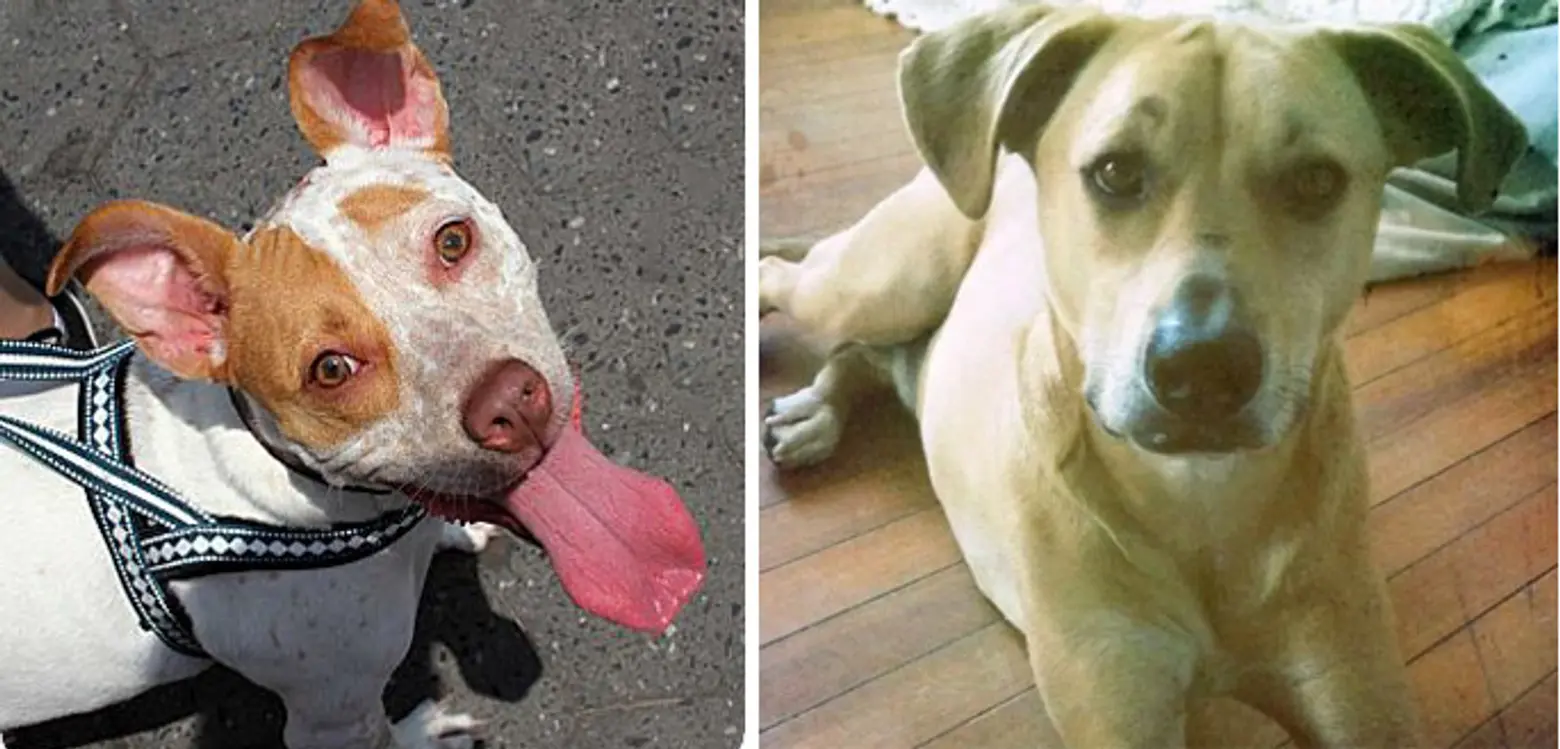 Luna the pointer mix. Image by Tina Marney (L); Casey the lab mix (R). Both are up for adoption
Luna the pointer mix. Image by Tina Marney (L); Casey the lab mix (R). Both are up for adoption
How does Foster Dogs NYC work with rescue groups and organizations?
Sarah: We have a database that is accessible on our website. It’s called the Foster Roster and anyone can complete the application. It’s very quick and simple. The idea is that we have a list of close to 1,000 applicants. These are all people who are potentially interested in fostering, but they have applied to us as a general foster caretaker. They are not applying for a specific dog. They are telling us, “I want to foster a dog, please tell me my options and this is what I can handle.” One we have their information, we can reach out on behalf of any rescue organization who seeks our support. We are happy to work with anyone who wants to work with us.
We will reach out to appropriate people on our database and let them know what they need to know about certain dogs that need homes. And then it’s up to them to respond to us, and we facilitate the conversation and the rescue group and the foster caretaker continue the conversation from there. We follow up after to make sure things are going well or see how we can help further.
New Yorkers often worry about the size of their apartment preventing them from having a dog. Does size of a home really matter or is it about finding the right dog for the space?
Sarah: It’s one of my favorite questions. You don’t need a big apartment to have a foster dog. In theory, this is not a permanent commitment. So if your apartment is a little bit tighter for a couple of months, it’s not so bad to have a few less inches of couch space when you are watching TV. A dog is getting lots of his or her exercise outside either on walks or going to the park. However you exercise the dog, you are taking care of this outside of the apartment. A dog is perfectly happy being away from a kennel. While it depends on your building’s policy, I know people who have used hallways of big apartment buildings to let the dog run for a few minutes. You can do doggy playdates if you know someone with a dog and your foster dog is friendly. There are ways to get exercise without needing a large apartment.
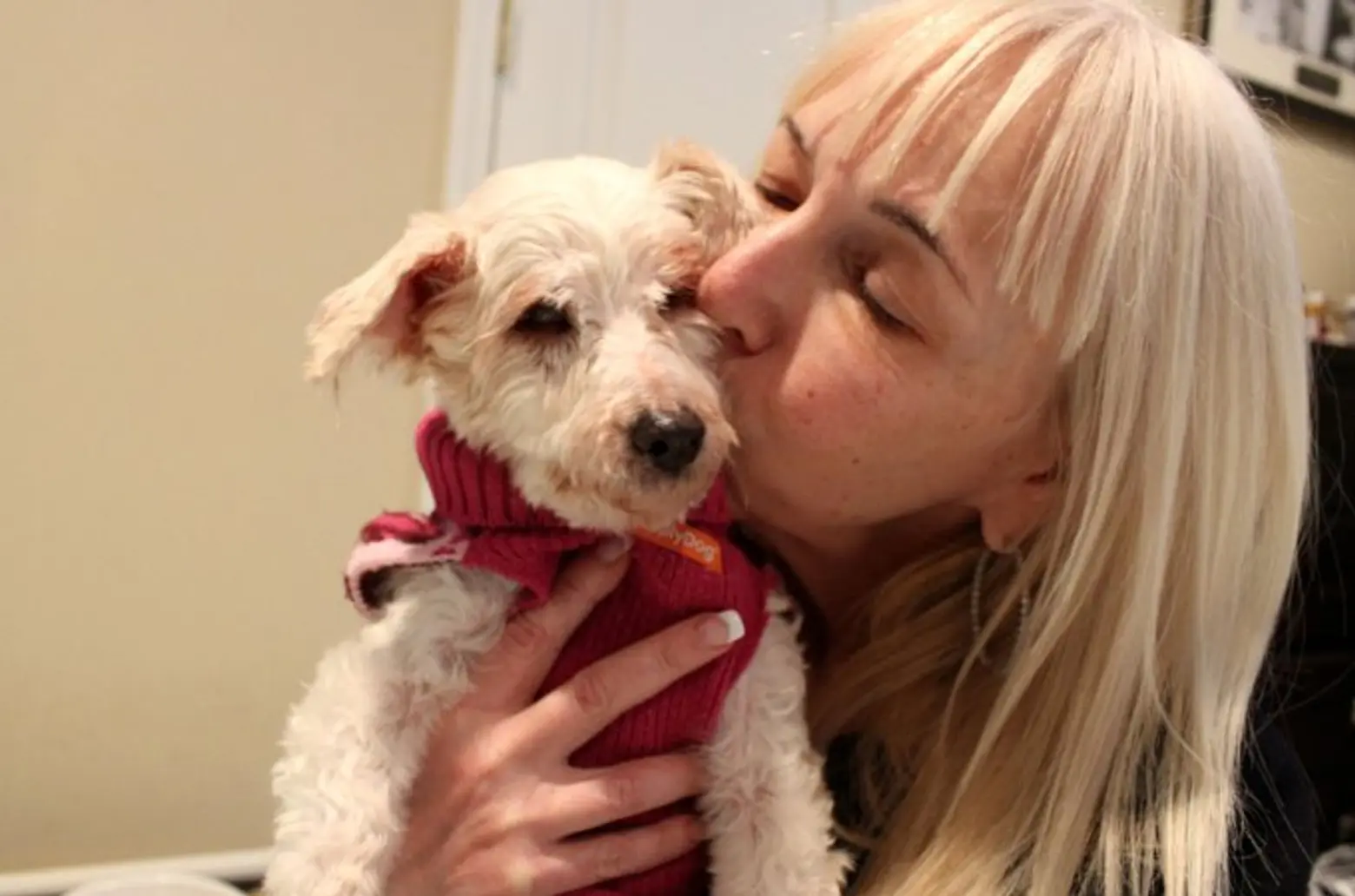 A senior pooch in the Fospice program. Image by Samantha Cheirif
A senior pooch in the Fospice program. Image by Samantha Cheirif
Foster Dogs NYC has a program called Fospice. Can you share a bit about this?
Sarah: It’s sad and surprising the amount of senior and really very old dogs that are put in shelters. Most of the dogs we come across, it’s at no fault of the dogs why they are there. We started Fospice in the middle of 2013 with a senior pit bull, and since then we have fostered at least ten senior dogs.
The idea behind the program is to give support to rescue groups and foster parents who take care of very elderly dogs in their final six months of life. We will donate a certain amount to a rescue group that saves a dog from the shelter. We will cover a portion of their medical costs depending on the case. Once the dog is placed in a foster home, or he or she might already be in a home, we will set up the foster caretaker with an amazing package; we will set the caretaker up with a professional photo shoot and they will get a photograph, we will get a water colored portrait of the dog, and the dog will get a large upscale bed and leash. It makes it very special and memorable for the caretaker who might only know the dog for a short time. To take a dog out of a cage and put them on a luxurious bed and make them feel spoiled is the best thing for that dog who just wants a warm place to sleep. All of this is a way for us to show that saving an elderly dog from the shelter can be beautiful and special. Very few people can and want do it. It’s an emotional experience, but we try to make it very positive.
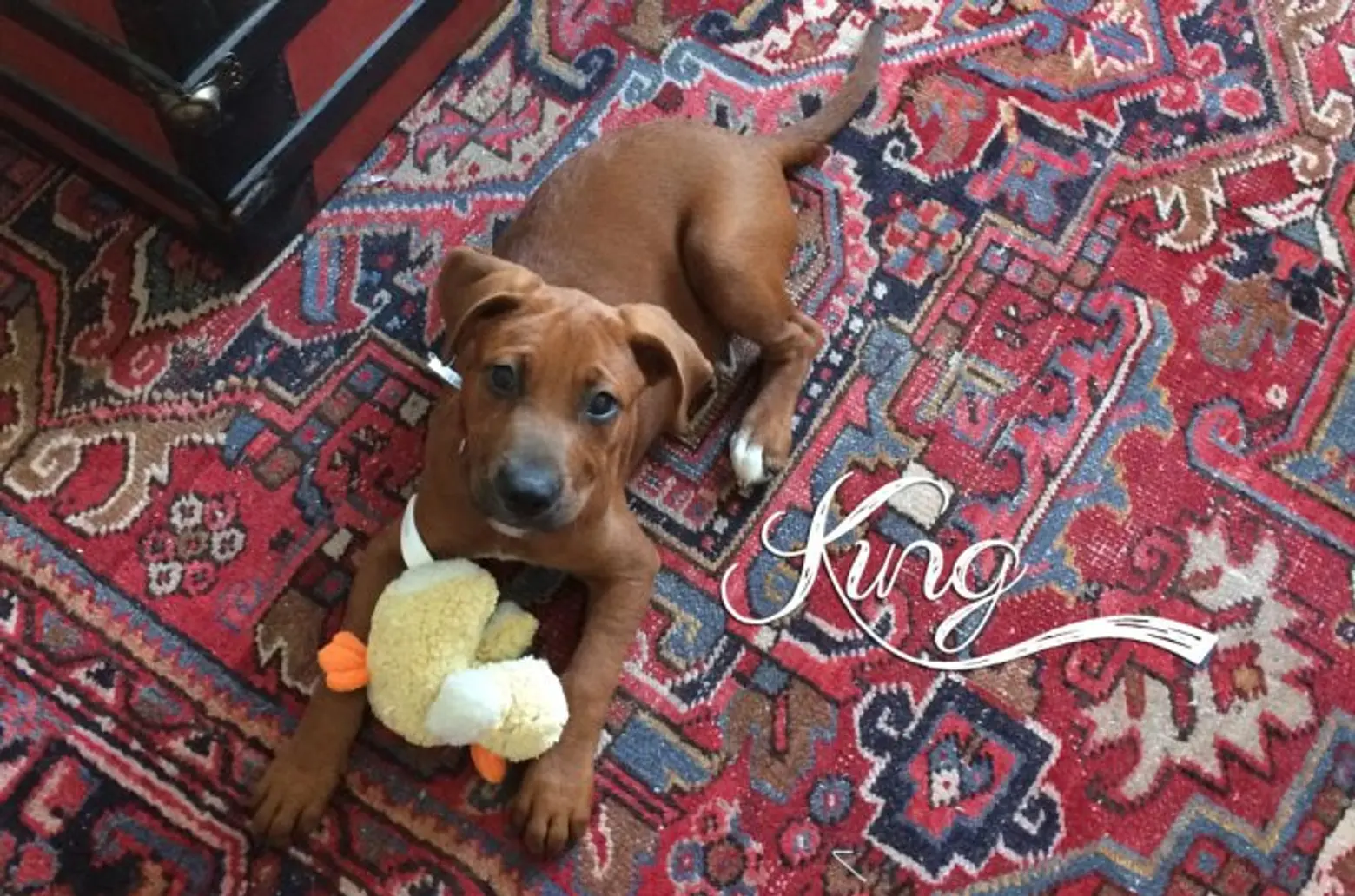 King, a sweet bloodhound mix puppy up for adoption
King, a sweet bloodhound mix puppy up for adoption
If you could share one fact about dogs in need, what would it be?
Sarah: The question that I get asked the most is how will I be able to get through the experience of saying goodbye to my foster when they get adopted. What people don’t realize is that it’s the most incredible, uplifting feeling. Yes, you are sad for a couple of hours or days. You will get over it by taking in a new dog in need. People also don’t realize they can follow up weeks, months and even years down the road with the adoptive family and keep in touch. If the adopter is open to it, it can be an open adoption.
A personal story: my first foster dog was a small pit bull mix from the animal shelter. She was a adopted by a wonderful young woman who has given her the best life. Now they live a five minute walk from me and I see them all the time. This is the luckiest dog because she got the best possible home. To see your foster dog thriving down the road is incredible.
For New Yorkers interested in fostering, what is the first thing they should do?
Sarah: The first step is to look at the website and browse through the We Need Homes category. There are certain dogs that are marked off as “foster me” and certain dogs marked off as “adopt me.” Some foster dogs are not up for adoption. For example, if a foster dog needs a home for one week because he or she has a pending adoption and just needs a place to stay until that is completed. I would say a majority of dogs on the website are looking for foster homes and it’s clear within their description. What’s cool is that when looking at dogs profiles, we give enough information as possible. If they are good with dogs, cats, children, other information that is known and the contact information for the appropriate parties. We want you to talk directly to the organization to show you are interested and have something wonderful to provide.
Another things you can do is there are adoption events going on in New York City all the time, particularly on weekends. Stop by an event and ask the rescue group about their foster program.
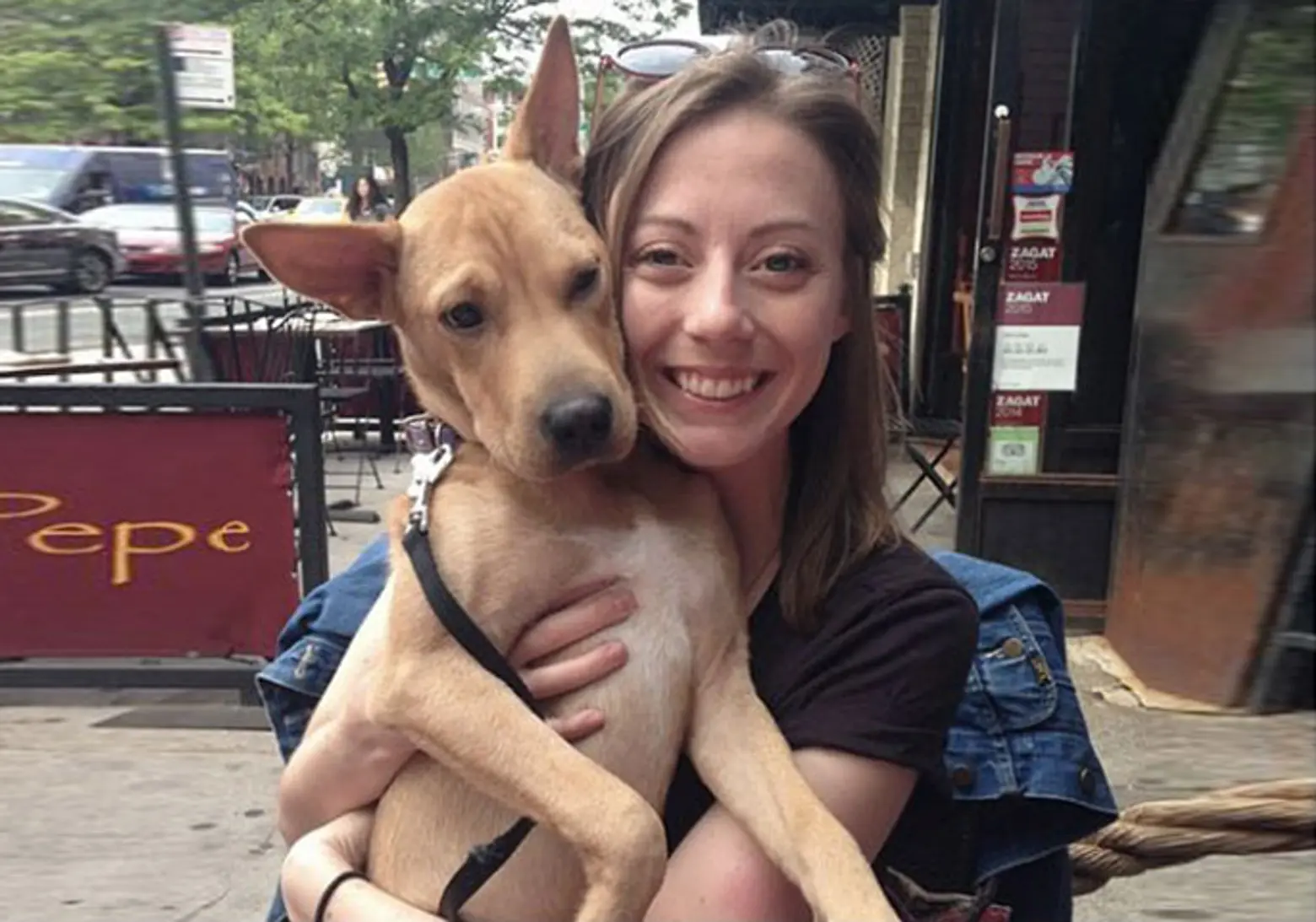 Willow the puppy a current Fospice recipient with her foster mom
Willow the puppy a current Fospice recipient with her foster mom
How can New Yorkers who might not be in a position to foster still make a difference?
Sarah: If you can’t foster at this time, share a link of a dog that seems appropriate for a specific friend. If you know that your best friend is looking for a boxer and you see a boxer, share it. Spreading the word is one amazing way that these dogs get noticed. You can also donate to our organization. Every dollar helps!
What does helping dogs find wonderful foster and forever homes mean to you?
Sarah: Pretty much, if I am not working on Foster Dogs NYC, I feel empty. I feel that I am not improving the world. Because I am running this organization, I feel so fulfilled. Yes, there are challenging moments and disappointing times just as with any company or volunteer job, but when I see a photo of a dog who found a foster home or was adopted through my website or when I hear that somebody fostered a dog and that is an experience they want to do again, that’s what keeps me going. I truly feel that Foster Dogs NYC has made a huge difference over the last six years that we’ve been in existence. It’s an organization that continues to improve and bring in more volunteers and more support rescue groups and for foster parents in the New York City area.
+++
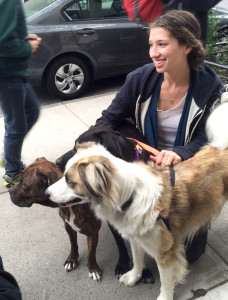
Several of the dogs featured in this article are looking for foster homes! For more information, please get in contact. You can also meet more adoptable dogs this weekend at Foster Dog NYC’s summertime adoption event being held this Saturday from 12-4pm at Love Thy Beast. More details on that here.
[This interview has been edited. Lead photo courtesy of Jenn Hix Rosen]
RELATED:
